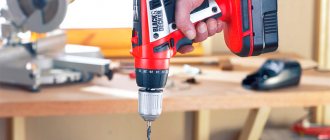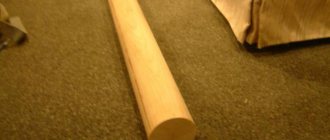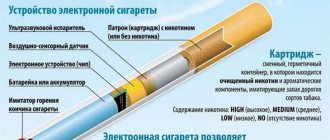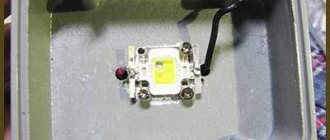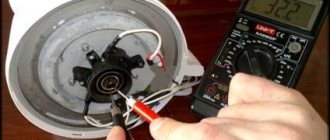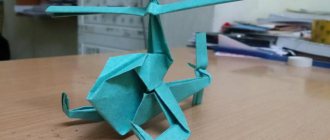Glasses
is an optical device used for optical correction of human vision in case it deviates from the norm and protects the eyes from dangerous external influences.
Repairing glasses requires a tool that rarely anyone has at hand. If you do not have the opportunity to repair your glasses yourself, you can contact professionals who will repair them, and if repair is impossible, they will help you choose new ones.
If the screw for fastening the glass or in the hinge for fastening the temple (arm) is simply unscrewed, then even a child can cope with such a repair; just take a watch screwdriver or a knife with a sharp end and tighten the screw, without applying more force, until it stops.
But if the frame of the glasses breaks at the place of the nose, or the temple breaks off at the hinge, then such a breakdown of the glasses is no longer easy to fix; repairs require tools and knowledge of technology.
In modern glasses, the temples are often attached to the hinges using flex. This mechanism is a spring that fixes the temple (arm) in a given position and allows the temples to move apart, in contrast to the standard 100˚ angle of ordinary glasses, by an angle of up to 160˚.
Frames with flexes eliminate pressure on the head when wearing glasses and distortion of the frame when removing glasses with one hand, so glasses with flexes last longer and are more comfortable to wear. But the more complex the glasses are, the more likely they are to break.
How to screw a screw into the hinge of a frame with flex glasses
If it is not difficult to screw in a loose screw in the fastening hinge of simple glasses, then in glasses equipped with flexes it is not as simple a task as it seems at first glance. When attaching the temple, the screw passes through the movable flex bar, and if the screw is unscrewed, the flex bar is pulled into the cavity of the temple and the mounting hole in the frame does not coincide with the hole on the temple. It is impossible to tighten the screw.
When analyzing the breakdown, everything became clear; you need to pull out the flex bar and screw the screw into place. The bar can be easily pulled out using an awl or a needle if you thread it through the hole for the screw, but then there is nowhere to screw the screw. Otherwise, it seems like there’s nothing to grab onto. But if you look closely, it turns out that there is a ledge in the bar protruding from the temple, beyond which it can be pulled out. Only the problem of a lack of hands arises. A vice can serve as a third hand.
The temple is clamped into the jaws of a vice; if the material from which the temple is made is soft, then you need to place a piece of leather between the jaws of the vice. But even with the help of a vice, screwing a screw into the frame of glasses is not easy, since you have to hold the base of the frame with one hand and at the same time, with the same hand, use a small screwdriver to move the flex bar up so that the holes coincide. With your second hand you need to insert a screw into the aligned holes and screw it in. I only succeeded after a few tries.
The original screw was lost and had to be screwed in with a suitable diameter that came from a broken calculator. Before assembling the glasses, you must first tighten the new screw with force, thereby cutting a new thread. In order to prevent the screw from unscrewing again, I riveted it a little on the side where it exits the frame of the glasses.
If a suitable screw cannot be found, it can be replaced with a brass or steel rod of a suitable diameter for fixation by riveting its ends, as described below.
The frame is bent outward and the glasses do not fit well on the face; the temples are bent into an arc
The plastic frame and temples can only be bent when exposed to high temperatures. They are elastic enough to maintain their bending shape under the influence of force. This means that you can give them their previous shape in the same way - heat them and bend them to their original position. You can heat it to the desired softness in hot water - boiling water using a pair of pliers. The plastic from which the glasses are made lends itself well to heating and this operation is usually successful.
After the part to be repaired has warmed up sufficiently, remove it from the water. Place the earhook on a flat surface and press down with something heavy until it cools completely. Give the frame the desired bend and hold it in this position with your hands until it cools completely. It can only bend at the place of the jumper between the lens windows. This is where your main efforts should be made.
Deformations of metal frames and temples can be corrected by mechanical action with pliers or simply with your hands.
Repair of flex glasses frames with flex
I received a pair of glasses for repair, the temple of which broke off at the point where the hinge was attached to the flex.
The load on the junction of the temple with the flex is large and repairing glasses with superglue or epoxy resin would not provide a reliable connection. The only option left was the mechanical repair method.
At the end of the temple of the glasses there was a hole with a rectangular groove, and the counter part of the part, which went into this hole and was fixed in the hinge of the frame, was a narrow flat steel strip about 1 mm thick. The only possible reliable method of repair was to connect the parts using a rivet.
There are no industrially manufactured rivets for such minor repairs. But a brass sewing pin with a metal head 0.7 mm in diameter worked well as a rivet. The size of the pin determined the diameter of the holes that needed to be drilled in the parts to be joined.
Before drilling, you need to make markings. The first hole must be drilled in the earpiece (arm), at a point calculated so that it passes through the center of the strip secured in the hinge of the frame.
To do this, the earhook needs to be clamped in a vice. Between the jaws of the vice, so as not to damage the covering of the temples, place pieces of leather and use a core to mark the drilling point.
Next, you need to drill a hole in the earhook. It is difficult to drill a hole with a diameter of 0.7 mm with a powerful household drill without breaking the drill, since it is impossible to feel the pressure on the drill due to the greater mass of the drill and this will lead to inevitable breakage of the drill. For such work, you need a miniature drill, for example, like in a homemade mini drilling machine.
You also need to drill a hole in the flat plate that secures the temple to the frame hinge. Before drilling, you need to mark the drilling point. To do this, the plate is inserted all the way into the groove of the temple located at its end and in this form the assembly is clamped in a vice lined with leather. The temple of the glasses should take a position relative to the frame that corresponds to the glasses being worn on the person’s head.
The hole previously drilled in the temple will serve as a conductor; inserting a drill into it will drill a hole in the plate. You need to drill very carefully, using little force, as the drill can easily be broken.
The holes are drilled, and you can begin the final stage of repairing the glasses, connecting with rivets. The flat plate is inserted all the way into the groove of the temple, and the pin is threaded through the holes.
Using pliers, the pin on the opposite side of the head is shortened so that the protruding part is 0.2-0.3 mm high.
To complete the repair, all that remains is to flare the protruding part of the pin using a small hammer. To do this, you need to press the round head of the pin against the anvil and with light blows, changing the angle, flatten the part of the pin protruding above the temple.
If there is no small hammer, then you can flare the pin with a large hammer, striking weakly on the protrusion of the pin through the metal rod.
As you can see, the repair of the glasses is completed, the connection of the temples with the base using rivets turned out to be neat and did not spoil the aesthetic appearance of the glasses.
While I was repairing the glasses, putting one temple in place, the second one broke. I had to repair it using the technology described above. Now the glasses will last a long time after repair, and time has confirmed this. I tested the technology for repairing glasses with rivets on several types of glasses frames; after the repair, the glasses at the junction of the temples with the console no longer broke.
Causes of breakdowns
First, I would like to dwell on the reasons for the occurrence of certain breakdowns. Typically, there are two reasons:
- The first is the natural wear and tear of glasses frame parts due to their long-term use.
- The second is the impact of brute physical force on the frame. He dropped it and stepped on it. I didn't notice and sat on them. You put it without a case in your inner pocket and you were pressed into the crowd, among passengers on public transport.
It is quite possible for a home craftsman to fix most of the damage that occurs to the frame itself.
To repair the frame, you may need the following tools and materials:
- watch screwdriver, pocket knife;
- small pliers, miniature vice;
- electric drill, electric soldering iron;
- universal glue;
- fishing line 0.3 mm.
The frame of glasses can be made of metal or plastic. The similarities in their repair end with restoring the functionality of the hinge. So let's start with it.
Repairing the temple of glasses with a broken hinge
A neighbor approached me with a request to try to repair his favorite glasses, since a specialized workshop refused to repair him - they advised him to buy new ones.
The arm of the glasses broke at the hinge and at first glance it seemed that it was impossible to repair the glasses. But if you think about it, you can always find a way to repair it.
First you need to unscrew the self-tapping screw and glue the broken part of the loop to the earhook using Super-glue “Contact”. I often use this glue to glue any cracked or broken parts together. But in this case, the fracture area is small and the glue will not hold securely. Therefore, the parts were glued together mainly for the convenience of further repairs.
Next, a bracket was bent from a paper clip, as shown in the photograph, and, using heating with an electric soldering iron, fused in the longitudinal direction of the temple. The middle of the bracket should follow the crack line.
To ensure a secure connection, a second bracket was fused across the temple. To avoid burning your fingers and to fuse the bracket into the desired place on the earhook, it is convenient to hold it with tweezers. It takes up to a minute to warm up the brackets, there is no need to rush here. When the bracket warms up to the melting temperature of the plastic, it will easily fit into it.
After the brackets are fused into the temple, all that remains is to smooth out the protruding plastic and cut off the excess after it has cooled with a knife or grind it off with fine-grained sandpaper. If the bracket appears on the surface, then it can be heated again and sunk deeper.
Now the brackets are no longer visible, the resistance to breakage after reinforcement with steel brackets of the temple has become higher than before. The glasses will no longer break at this point. If desired, the joint can be polished, making it completely invisible.
The repairs have been completed and now the glasses look like new and, if treated with care, will last a long time. When I returned the glasses to my neighbor, he was very surprised that they were able to be repaired, but he doubted whether the temple would break off in this place again. After a month of wearing it, he started asking me what kind of glue I used to glue the glasses together. After all, he did not know that the bow at the site of the breakdown was reinforced with metal brackets.
The frame is split in half at the bridge of the nose
Immediately before work, you need to prepare some equipment. First of all, make the so-called conductor. This is a thin wooden plate with a length slightly less than the width of the glasses and a width equal to the height of the frame. To avoid scratching the lenses, wrap this plate with a thin, soft cloth. You can use a wooden ruler for this.
Also read: How to choose vision glasses
During the work, you will need a drill with a drill of the smallest possible diameter. You need to think about how to secure it motionless. In this case, your hands will be free to do other work. Before starting work, thoroughly degrease the broken area on both halves of the frame.
One half of the frame is fixed to the conductor using a regular rubber band. The second half is pressed tightly against the first and fixed in exactly the same way.
Before you start gluing, you need to make sure that all parts are securely fastened and will not move during the work. After this, apply glue to the fracture site, making sure that no air bubbles form. Then remove excess glue and leave the glasses alone for a while to let the glue dry.
The next step is to select the optimal distance in both halves of the frame near the fracture site and drill two through holes from the upper ends of the frame. An ordinary thread 120 cm long, folded in half, is inserted into one of them using a needle. Then this thread is threaded into the second hole, then it is pulled back into the first. This procedure is repeated two to three times. The diameter of the drilled hole will no longer allow. The thread is stretched as tightly as possible with each turn. The remaining ends are pulled apart in different directions and secured with tape to the temples of the glasses. The threads that act as a bandage are coated with glue.
ATTENTION! Expert advice. Some people advise cleaning the broken area with sandpaper. It's hardly worth doing this. After all, it’s a fracture, not a smooth cut. The coincidence of the teeth and cavities of the fracture will contribute to a stronger connection of both parts of the frame.
Following this, one of the ends of the thread is removed from the temple of the glasses and carefully, firmly, turn to turn, obliquely wound to the gluing site. Having fixed this thread at the opposite end of the bandage, fasten its turns together by filling them with glue. Next, the same operation is performed with the second end of the thread. In this case, the bevel goes in the opposite direction.
This cross-shaped winding makes the connection more durable. In both cases, you need to make two or three such layers of winding, not forgetting to soak each layer with glue.
Repair of the place where the temple of glasses is attached to the rim
Another pair of glasses with a broken temple went into repair. But in this case, the earhook was intact, but the place where it was attached to the headband was destroyed.
The earhook loop was made of brass so it didn't break. This failure is more likely due to a design flaw in the frames of the glasses, rather than to handling them.
The earhook loop was attached to a rectangular hole made in the frame using one self-tapping screw screwed into the metal of the loop. When wearing glasses, the screw slowly unscrewed, and the load on the plastic increased, which is why it cracked. Ultimately, the self-tapping screw was completely unscrewed and lost, causing the shackle to fall out of the mount.
There was no screw suitable for the size, so I had to use a standard M1.5. To do this, a thread was cut in the hinge bar with a tap.
The plate on the rim for securing the earhook loop had a crack. But installing a metal bracket to strengthen it was impractical, since it was necessary not only to strengthen the plate, but also to increase the support area of the screw head
Therefore, a washer with a ribbed circumference was selected and fused into the plate by heating it with a soldering iron. As a result, the area of support of the screw head on the plastic increased many times over, and the crack partially melted, which also increased its strength.
Next, the mating surfaces of the plates were lubricated with Super-Moment glue, the hinge plate was inserted into the square hole in the base of the glasses and the screw was tightened. At the same time, the broken fragment from the frame was also glued. It did not bear the load and therefore there was no need to strengthen its fastening with a bracket.
The next glasses were repaired with our own hands and their use for several months confirmed the reliability of the repairs performed.
Restoration of screw fastening
The main structural element that holds the temples and frames together is a hinge unit, which can have two designs.
In one of them, the bow is attached using a conventional screw connection. A more complex design is the design, in which a special spring-loaded mechanism called a flex is used for fastening.
In the simplest case, when the malfunction is associated with unscrewing a screw from the fastening unit, it is enough to simply return it to its place using a clock screwdriver or a well-sharpened knife. No soldering is needed here.
Repair of a semi-rimless frame with lens fastening on a fishing line
In a semi-rimless frame, the lenses are half mounted in the frame, and the rest of them are held in the frame by a fishing line, half recessed in the bevel (a groove running along the entire length of the end of the lens). Thanks to this method of attaching lenses, glasses have an elegant appearance and are lighter in weight compared to rim frames, especially if the lenses are plastic.
But you have to pay for elegance with a more careful attitude during use, since such a frame, compared to a bezel frame, is less reliable. If you forget to take off your glasses and start to remove a piece of clothing over your head, it may well happen that the glass falls out or the fishing line jumps out of the frame, as in the photo. If the lens falls out, but the fishing line remains securely fastened in the half-rim, then due to the elasticity of the fishing line, the lens can be put back in place. If the fishing line is disconnected from the frame, you will need to replace the fishing line with a new one.
But don’t get upset and run to the workshop; such a breakdown of the semi-rimless frame of glasses is not difficult to fix with your own hands. For repairs, ten centimeters of transparent fishing line with a diameter of 0.8 mm is enough. You can ask fishermen you know for fishing line or ask at any fishing tackle store. They cut off half a meter for me as a thank you.
The first step when starting repairs is to remove the old fishing line from the frame. Usually it is enough to move the fishing line back and forth with force and it will move from the place of attachment. If its melted ends interfere, the line can be cut. It won't be needed anymore anyway.
After freeing the holes from the old fishing line, you need to check whether the fishing line purchased for repair fits well. To do this, you need to bite off one of its ends with side cutters or cut off obliquely so that the end of the fishing line becomes sharp. This will make it easier to insert it into the holes of the frame.
If the fishing line cannot be threaded through the mounting hole of the frame, it needs to be cleaned. This is best done using a mini drill with a drill bit with a diameter of 0.8 mm. But if this is not possible, then you can use a needle or a thin awl; an unbent paper clip will also do.
The holes in the half-rim of the frame are cone-shaped; on the lens side their diameters are 0.8 mm, and on the outer side 1.5 mm. This is clearly visible in the photograph. Thus, by melting the end of the fishing line, you can securely secure it in the frame.
First, the fishing line is threaded through the hole in the nose pad, without a lens. Next, the end of the fishing line is melted using a soldering iron and quickly, before the end of the fishing line hardens, it is pulled into the hole in the nose pad. You need to retract it slowly so that the line does not jump out of the hole.
If you have a high-power soldering iron at your disposal, you can wind several turns of any wire with a diameter of 1-2 mm, copper, aluminum or steel, around its tip. And with this improvised sting, warm up the fishing line. If you don’t have a soldering iron, you can melt the fishing line with a nail heated on the burner of a gas stove. To avoid getting burned, you need to hold the nail with pliers. You can use the sharp tip of a heated electric iron or, at worst, even a small flame from a lighter to melt the fishing line.
After fixing one end of the fishing line in the nose pad, the lens is inserted and the fishing line threaded into the hole on the side of the temple is stretched. Next, the fishing line is pressed with your fingers where it passes through the facet of the lens, and is cut so that its end protrudes from the hole by a couple of millimeters. Next, the lens is removed, the second end of the fishing line is melted and after cooling, its lens is installed in the half-rim.
The remains of the melted fishing line protruding from the holes of the frame must be cut off flush with a sharp knife.
The glasses have been repaired and are like new. The repair took less time than it took to read this article, which I hope was useful to you.
Features of a wooden frame
An indicator of product quality are characteristics such as:
The following types of wood are used to make frames: walnut, birch, oak, cherry, maple, bamboo and aspen. Ebony, sandalwood and African black wood are also suitable. An original solution is to combine several materials in one model. The quality of the product depends on the type of wood. It is worth noting that a quality product cannot be too cheap.
The service life of the frame depends on the amount of resin and oil in the raw material: the less of them in the composition, the faster the glasses will lose their attractiveness.
Sun protection optics in a wooden frame have a number of advantages over products made of plastic:
Repairing a broken half-rim of a glasses frame
A few years passed, and my favorite half-rim glasses on a fishing line cracked as a result of a collision with the right angle of a kitchen shelf.
As you can see in the photo, the frame broke in the glass installation area at the narrowest point. To repair it, gluing technology was used, followed by reinforcement of the fracture site with a metal bracket.
In the first step, the frame must be glued with Super-Moment glue or similar, intended for gluing plastic products. To do this, you must first apply a thin layer of glue to the inside of the rim of the frame, which is in contact with the glass along its entire length. Next, also apply a thin layer of glue to the end of the glass in contact with the frame.
After gluing, a small gap was discovered between the glass and the nose pad. To ensure reliable gluing, a small amount of soda was poured into this gap and then soaked in glue.
After such gluing, the frame received sufficient strength, but for higher joint strength, a metal bracket made from a paper clip was additionally installed.
The bracket was fused into the glasses frame using an electric soldering iron. For clarity, the photo shows the bracket not yet completely recessed into the plastic.
Ultimately, the bracket was completely recessed into the plastic of the glasses, the area was cleaned with sandpaper and polished with felt. There are practically no traces of repairs left.
In the same way, you can successfully repair the plastic temples and cracked frames where the nose rests with your own hands.
Production of wooden glasses
Fashion trends in recent years have brought wooden frames to the peak of popularity. Wide demand ensures the environmental friendliness and safety of such accessories. Made from natural materials, the products retain the warmth and energy of nature.
Today, wooden men's glasses, like watches, emphasize status, taste and attitude to life. The accessory has long ceased to be just a means of protection against ultraviolet radiation. It is also noteworthy that the variety of frames, both for the stronger sex and for the female half of humanity, is an integral part of fashion designer shows. Unisex accessories do not lose their popularity either.
Among the admirers of wooden glasses there are people of different financial incomes. Many people want to express their individuality and emphasize their sense of style, which in turn makes the production of frames an interesting idea for business development. However, before starting your own business, you should immerse yourself in all the intricacies of the work, analyze the pros and cons, and also draw up an indicative plan of action.
Let's try to figure out whether creating frames is so attractive from an investment point of view, and what explains the consumer's desire to buy wooden sunglasses? —
Repairing a broken plastic rim of a glasses frame
I had to repair glasses with plastic frames, in which one of the plastic glasses fell out of the rim.
Upon closer examination, it turned out that the rim at the bottom was cracked in half. This is one of the glasses breakdowns that you can fix yourself in a few minutes.
To do this, just apply Super glue to the crack and on the inside of the rim a couple of centimeters away from the crack. Next, insert the glass into the rim, squeeze it tightly and hold it there for a couple of minutes.
The rim of the glasses at the crack site does not bear any force load, and therefore there is no need for reinforcement with steel wire. The glasses have been repaired, the appearance has not changed, and now, if treated with care, they will last a long time.
How to save your glasses
In order to protect your glasses from breakage, you need to adhere to the following recommendations:
- It is best to wear them with a special safety cord to prevent the product from falling and being damaged;
- before removing clothes, do not forget to take off your glasses to avoid breaking them;
- It is better to store them in a case specially designed for this purpose.
We also note that when not in use, it is advisable to fold the temples, without leaving the glasses in a dangerous and unstable position.
Repairing metal eyeglass frames with a broken rim
They brought me glasses with metal frames with a broken rim at the bridge of my nose, which the repair shop refused to repair. The breakdown was really serious. Glue, even the strongest one, will not hold in this case, since the area of the end of the rim at the fracture site was no more than a square millimeter.
I, too, immediately thought that this was a hopeless case and it was impossible to repair the glasses, but after a while I suddenly came up with an idea on how to do without welding metal. After all, you can repair the frame by gluing the broken metal frame directly to the lens of the glasses. The area of the gluing surfaces will become large and, thus, sufficient strength of the frame will be ensured after the repair as a whole.
The universal super glue “Contact” is well suited for gluing frames. This adhesive is made on the basis of cyanoacrylate, has great adhesive strength and polymerizes upon contact with water in the air. The higher the air humidity, the faster the glue hardens, so you can glue even damp surfaces. The setting time of the glue, depending on air humidity, ranges from several seconds to several minutes. The glue hardens completely within a day.
By the way, not all home craftsmen know that if you need to quickly repair a crack or chip in hard materials, you can prepare homemade putty by mixing super glue with baking soda.
The lenses of the glasses were plastic, and to protect them from glue getting on the optical surface, strips of tape had to be glued on both sides around the perimeter of the lens. It is undesirable to cover the entire surface of the lens with a single piece of tape, since after gluing it will be difficult to peel it off without damaging the optical surface of the lens. Excess tape on the ends of the lens can be easily removed using fine sandpaper.
If the lenses are made of glass, then there is no need to glue the tape. Super glue is easily softened with acetone, which is safe for glass. Therefore, to remove residual adhesive after repair from the optical surface of the lenses, it is enough to wipe them with a soft cloth soaked in this solvent.
Before gluing, you need to think through all the movements and practice installing the lens in the frame before applying glue to it. When the movements are practiced, you need to apply glue to the end of the lens, accurately insert it into place in the frame and tighten the frame ring with your fingers for a few minutes. I could not take photographs of applying the glue and installing the lens, since only a few seconds were allotted for this operation.
When the glue sets, remove the tape and tighten the frame with thread, tying it as in the photo. The glasses should be left bandaged for a day until the glue has completely hardened. If there is a gap between the rim of the frame and the lens, it is advisable to additionally fill it with super glue.
Checking the glasses frame after repair with gluing showed that it has a sufficient margin of safety for further use. The appearance of the glasses remained without visible changes.
Glass pops out when you turn your head suddenly
This is typical for glasses with thin metal frames. There may be two reasons for this.
Or the screw connecting the two parts of the lens window has become loose. In this case, it will be enough to tighten the screw all the way with a clock screwdriver and flare the opposite end. Or the frame, made of thin metal, is bent and in this form is not able to hold the lens in place. Here you need to disassemble the frame and use the lens as a blank to straighten the frame along its contour. This work must be carried out as carefully as possible. Metal, as a rule, is very thin; frequent and sharp bending of it can lead to irreversible consequences. After which, since the lens has been removed from the frame, you can place it on glue for reliability, tighten it with screws and quickly remove excess glue.
ATTENTION! Expert advice. After disassembling the frame, clean the inner perimeter of the lens windows from any dirt that has accumulated there while using the glasses.
Repairing a broken eyeglass frame temple
At the request of a friend, I had to repair glasses where one of the temples had broken in half. The breakdown occurred at the junction of its metal part with the plastic extension.
The metal part of the temple was attached to the plastic part by means of a protruding pin, which was tightly inserted into the hole in the plastic part of the temple and secured with a screw. It was not possible to remove the pin from the plastic after unscrewing the screw, since the break occurred along the line of the plastic, and it was impossible for the tool to catch on the pin. I also didn’t want to grind down the plastic to shorten the temple.
The difficulty of repairing the earhook at first glance was aggravated by the fact that the metal part was covered in openwork holes. But as it turned out, this was a plus. To restore the integrity of the temple, a specially shaped pad was made from a sheet of brass 1 mm thick. I do not give the geometric dimensions of the pad, since all temples are different and the pad for repairing a specific glasses frame will have its own dimensions, depending on the width of the temple at the point of breakage.
As you can see from the photo, two holes were drilled in the cover and three bends were made. The bends are needed to prevent axial swing of the connected parts of the temple. The dimensions of the holes determined the finished holes in the metal and plastic parts of the temple, and were 2.5 mm and 1.5 mm in diameter, respectively.
The metal part of the temple was secured to the pad using a shortened M2.5 screw with a conical head. The screw was used as a rivet.
It was inserted from the outside of the metal part of the temple and riveted from the inside with a small hammer. To ensure that the riveted part of the screw does not protrude into the plate, the hole was pre-countersinked.
The pad was secured to the plastic part of the temple using an M1.5 screw screwed into the previously existing threaded hole in the remaining pin.
The photo shows a view of the pad after installing the screw and rivet on the inside of the temple.
And in this photo is a view from the outside of the temple after connecting its broken parts.
All that remains is to attach the earpiece to the frame of the glasses using a standard screw and the repair can be considered complete.
This is what the glasses looked like after the repair. If you don’t look closely, it’s difficult to notice the restored place on the temple, it’s not noticeable. But the earhook has become much stronger and now it will definitely never break in this place.
Making miniature glasses
So I’m finally ready for the next master class
